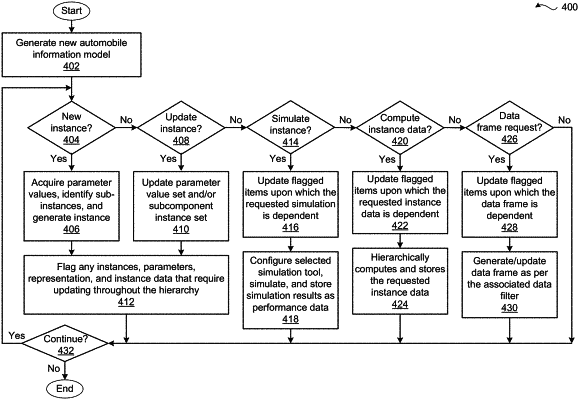| CPC G06F 30/23 (2020.01) [G06F 30/15 (2020.01); G06T 19/00 (2013.01); G06T 2210/36 (2013.01)] | 20 Claims |

|
1. A computer-implemented method for designing automobiles, the method comprising:
determining a first parameter value associated with a first parameter of a first instance of a first parameterized automobile component;
computing a second parameter value associated with a second parameter of a second instance of a second parameterized automobile component based on a structural relationship between the first parameter of the first instance and the second parameter of the second instance;
generating a computer-aided design (CAD) geometry model for an automobile based on the first parameter value, the second parameter value, and an automobile information model organizing the first parameterized automobile component and the second parameterized automobile component in a hierarchical design structure based on the structural relationship and one or more functional relationships between behaviors of the first instance and behaviors of the second instance;
modifying an item included in the automobile information model;
automatically propagating the modification throughout the CAD geometry model to generate a modified CAD geometry model; and
in response to generating the modified CAD geometry model, executing a functional simulation on a first simulation mesh in order to regenerate the one or more functional relationships between the behaviors of the first instance and the behaviors of the second instance.
|